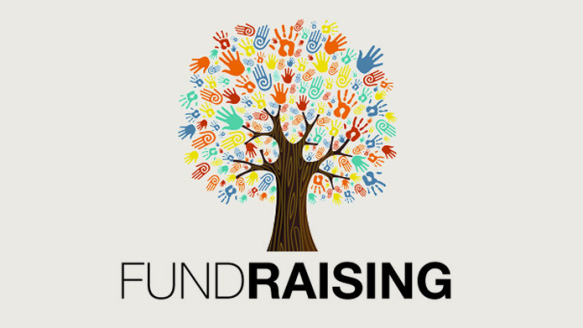Nonprofit Agency: Expert Providers to Assistance Your Mission and Goals
Nonprofit Agency: Expert Providers to Assistance Your Mission and Goals
Blog Article
The Duty of Area Engagement in Nonprofit Fundraising: Building Lasting Relationships for Lasting Assistance
Area engagement is significantly acknowledged as a vital component of effective not-for-profit fundraising. The approaches and approaches used to engage communities differ extensively, increasing important questions regarding efficiency and impact.
Comprehending Area Engagement
Neighborhood interaction is an important element of effective not-for-profit fundraising initiatives. It describes the techniques and tasks that organizations utilize to get in touch with their neighborhood areas, fostering partnerships that are equally valuable. Comprehending neighborhood interaction entails identifying its multifaceted nature, that includes partnership, outreach, and participation. Nonprofits must recognize crucial stakeholders-- such as neighborhood members, neighborhood organizations, and various other companies-- to produce efficient interaction approaches.
Effective neighborhood engagement is asserted on active listening and responsiveness to the needs and passions of the area. This process involves soliciting responses, recognizing community dynamics, and ensuring that the company's mission straightens with local priorities. Engaging the area can take numerous forms, consisting of public meetings, volunteer opportunities, and partnership initiatives, each designed to motivate participation and investment in the company's goals.
Furthermore, neighborhood involvement ought to be come close to as a recurring dialogue instead of a single effort. By fostering a comprehensive setting where area voices are listened to and valued, nonprofits can build a strong foundation for future fundraising endeavors. Inevitably, a deep understanding of neighborhood interaction empowers organizations to produce genuine connections that enhance their total efficiency and sustainability.
Advantages of Strong Relationships
Strong relationships created through area involvement return many benefits for not-for-profit fundraising initiatives. Firstly, these connections foster count on and reliability, important components in motivating benefactors to contribute. When prospective supporters see a nonprofit proactively associated with their community, they are a lot more likely to believe in its mission and influence.

Furthermore, these partnerships facilitate reliable communication. Nonprofits can utilize their connections to share stories of effect, updates, and requires, guaranteeing that supporters continue to be enlightened and engaged. This open line of communication not just strengthens bonds however also urges referral promo, broadening the nonprofit's reach.
Finally, strong community connections can bring in brand-new companions and enrollers. Services and individuals are more likely to line up with organizations that show meaningful community involvement, giving additional sources and assistance that can dramatically enhance fundraising capabilities. Therefore, cultivating robust relationships through community involvement is important to a nonprofit's long-lasting fundraising success.
Approaches for Effective Interaction
Just how can nonprofits efficiently engage their areas to improve fundraising initiatives? Regular updates, engaging web content, and calls-to-action can galvanize neighborhood interest and engagement.
Second, hosting area events, such as workshops, volunteer chances, or fundraising drives, facilitates face-to-face communication, enabling nonprofits to showcase their influence and efforts. These occasions not only increase funds yet also cultivate connections and permit community participants to involve directly with the cause.
Third, applying customized communication techniques can improve interaction. Tailoring messages to specific donor segments based on rate of interests and previous payments promotes a feeling of belonging and investment in the organization's goal.
Lastly, creating partnerships with local organizations and area leaders can enhance outreach initiatives. Collaborative initiatives can boost exposure and integrity, showing a collective dedication to the community's health. By incorporating these techniques, nonprofits can construct long lasting partnerships that enhance fundraising efforts and drive lasting assistance.
Determining Engagement Success
While engaging the community is essential for successful not-for-profit fundraising, gauging the performance of these interaction initiatives is equally essential. Developing clear metrics allows companies to assess just how well they are getting in touch with their target market and attaining their fundraising objectives. Key performance indications (KPIs) such as benefactor retention rates, volunteer participation levels, and involvement on social media sites platforms give substantial data for analysis.

Routinely examining these metrics makes it possible for organizations to pivot their strategies when required, guaranteeing that community involvement remains lined up with their overall objective. Furthermore, sharing these outcomes with stakeholders promotes openness and builds trust fund, motivating more area participation. Inevitably, a durable measurement framework not just informs future fundraising initiatives but additionally enhances the partnership between the nonprofit and its fans, preparing for lasting success.
Study in Area Impact
Many study highlight the profound impact that neighborhood interaction can carry not-for-profit fundraising success. One remarkable instance is the "Food for Thought" initiative, online fundraising where a neighborhood food financial institution partnered with institutions and services to host neighborhood dinners. These events not just raised funds yet likewise promoted a feeling of belonging amongst individuals, significantly increasing benefactor retention rates.
One more engaging situation is the "Environment-friendly Spaces Job," which included regional residents in the revitalization of city parks. This initiative not just gathered financial support from neighborhood services however likewise grew a volunteer base that added to recurring maintenance and programs. The sense of ownership and satisfaction among community participants translated right into continual payments.
In the world of arts, the "Art for All" campaign effectively engaged neighborhood artists and patrons to develop collaborative art installations, resulting in enhanced visibility and donations for a neighborhood arts nonprofit.
These instances highlight that when nonprofits focus on community participation, they can produce lasting relationships that boost fundraising initiatives, ensuring lasting support and promoting a vivid neighborhood society. Such cases show that community interaction is not simply a technique but a vital column of not-for-profit success.
Conclusion
To conclude, community interaction is indispensable to the success of not-for-profit fundraising efforts. By cultivating solid partnerships with neighborhood stakeholders, organizations enhance count on and reliability, resulting in enhanced donor retention and loyalty. Executing reliable interaction strategies and gauging their effect makes certain that nonprofits can adapt and flourish. Inevitably, a robust structure of neighborhood assistance not just magnifies fundraising prospective however also grows a culture of cooperation, important for attaining long-term organizational objectives and sustaining significant impact.
Nonprofits should determine crucial stakeholders-- such as area participants, local companies, and various other companies-- to produce efficient involvement methods.

In final thought, neighborhood involvement is integral to the success of not-for-profit fundraising efforts.
Report this page